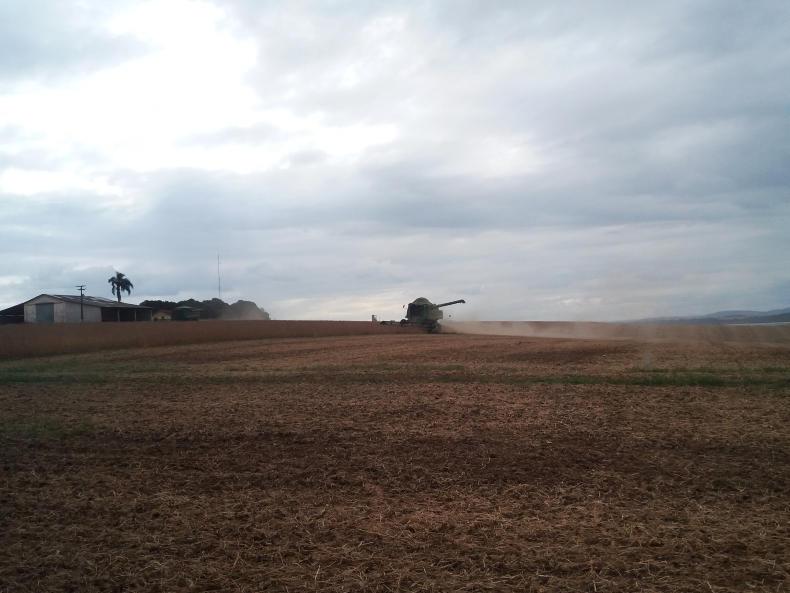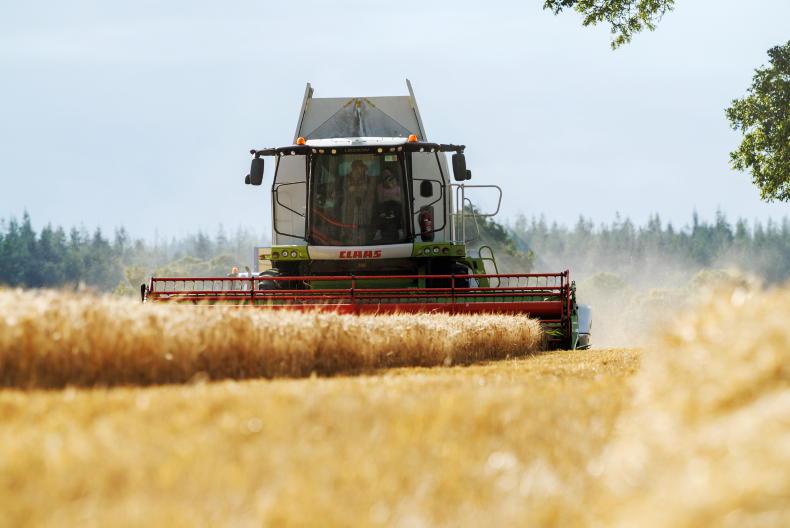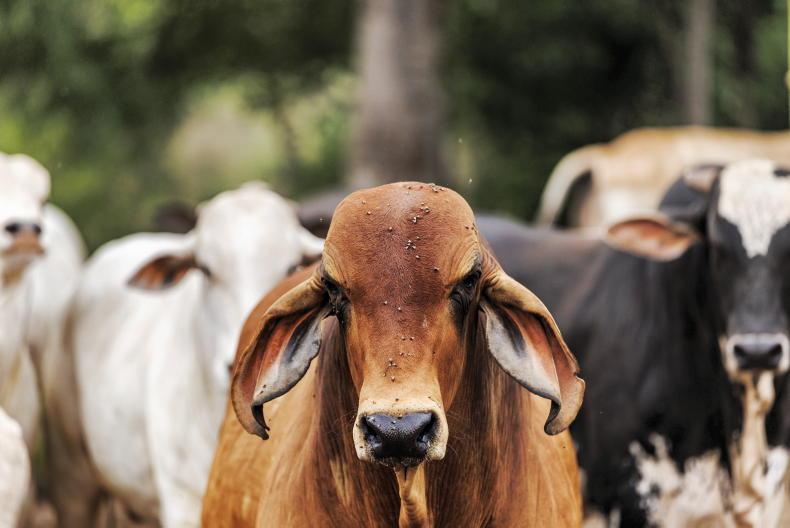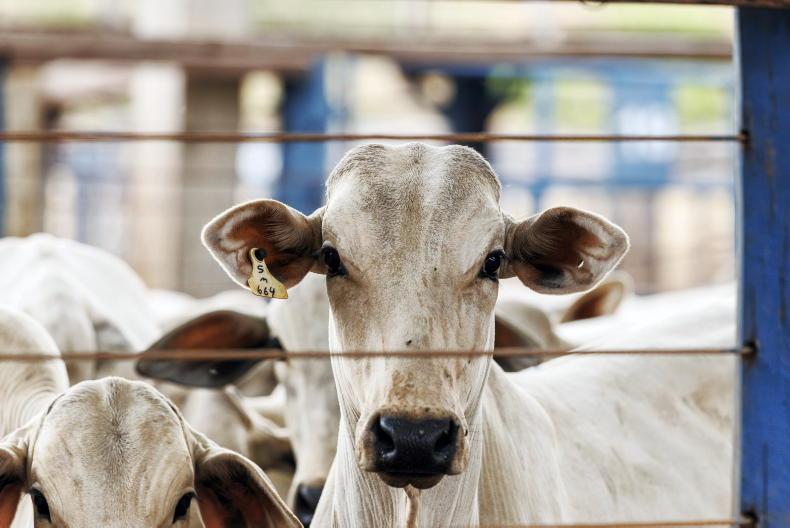The Brazilian agriculture sector accounts for 22.5% of GDP and in the region of 37% of the country’s labour force. There are over 5.2m farms in Brazil.
Brazil is the world’s largest exporter of coffee, sugar, orange juice, sugarcane ethanol, chicken and of course soya beans. It is the third-largest exporter of beef.
In 2018, soya beans accounted for 33% of agricultural exports, followed by soya hulls at 6.5%, beef at 6.4%, sugar cane at 6.4% and chicken at 6.3%.
Last year, the number one destination for Brazilian exports was China, with 35% of exports going there. It was followed by the European Union (17.5%) and the US (6.7%).
Grain
The state of Mato Grosso has the highest grain production in Brazil, accounting for over 26% of grain production. It is followed by Parana state and Rio Great South state. In total, the three states account for 56.4% of total grain production.
In the last 48 years, the country has increased grain production by a mammoth amount.
For soya beans, soya production has increased from 1.5m tonnes in 1970 to 119m tonnes in the 2017-2018 harvest
In 1970, some 27.3m tonnes of grain was produced from 21.4m hectares. In 2018, these numbers rose to 219.2m tonnes from a planted area of 58.1m hectares.
For soya beans, soya production has increased from 1.5m tonnes in 1970 to 119m tonnes in the 2017-2018 harvest. In the same time period, the area planted increased from 1.3m hectares to 35.1m hectares.
Figures from the Brazilian Institute of Geography and Statistics show that between 1975 and 2018, sugarcane production increased from 91.5m tonnes to 672.9m tonnes.
Beef
Brazilian beef production is forecast to rise 2.6% per annum up to 2021. A rise is also forecast in the amount of cattle for finishing which will be fattened in feedlots.
Currently, 13% of Brazilian beef cattle for finishing are fattened at feedlots – over 5m cattle fattened in feedlots in 2018.
By 2020, it is expected that 20% of Brazilian cattle will be fattened in feedlots.
Dairy
Dairy farmers are also in expansion mode. A recent Milk Point survey of the top 100 dairy farmers in Brazil found that 90% of dairy farmers have plans to increase cow numbers in the next three years.
As of 2018, the largest dairy herd in the South American country was producing an average of 73,730l/day. This figure was up 9% on 2017.
When it came to cost of production in 2018 for the top 100 farmers, the survey revealed:
52% had a cost of production of between 24c/l and 31c/l.30% had a cost of production of between 29/l and 33c/l.12% had a cost of production of between 20c/l and 24c/l.Coffee
The US was the top destination for Brazilian coffee in the first quarter of 2019, with 1.8m 60kg bags of coffee exported there. The US was followed by Germany with 1.7m bags and Italy with 1m bags.
Total exports of Brazilian coffee in the first quarter of 2019 reached 10m bags, with a value of €1.15bn.
Grain production: 225m tonnes.Meat production: 25.26m tonnes.Milk production: 35bn litres.Fruit: 38.7m tonnes. Read more
Brazilian agriculture in numbers
Diversifying into soya beans from sugar cane in Brazil
The Brazilian agriculture sector accounts for 22.5% of GDP and in the region of 37% of the country’s labour force. There are over 5.2m farms in Brazil.
Brazil is the world’s largest exporter of coffee, sugar, orange juice, sugarcane ethanol, chicken and of course soya beans. It is the third-largest exporter of beef.
In 2018, soya beans accounted for 33% of agricultural exports, followed by soya hulls at 6.5%, beef at 6.4%, sugar cane at 6.4% and chicken at 6.3%.
Last year, the number one destination for Brazilian exports was China, with 35% of exports going there. It was followed by the European Union (17.5%) and the US (6.7%).
Grain
The state of Mato Grosso has the highest grain production in Brazil, accounting for over 26% of grain production. It is followed by Parana state and Rio Great South state. In total, the three states account for 56.4% of total grain production.
In the last 48 years, the country has increased grain production by a mammoth amount.
For soya beans, soya production has increased from 1.5m tonnes in 1970 to 119m tonnes in the 2017-2018 harvest
In 1970, some 27.3m tonnes of grain was produced from 21.4m hectares. In 2018, these numbers rose to 219.2m tonnes from a planted area of 58.1m hectares.
For soya beans, soya production has increased from 1.5m tonnes in 1970 to 119m tonnes in the 2017-2018 harvest. In the same time period, the area planted increased from 1.3m hectares to 35.1m hectares.
Figures from the Brazilian Institute of Geography and Statistics show that between 1975 and 2018, sugarcane production increased from 91.5m tonnes to 672.9m tonnes.
Beef
Brazilian beef production is forecast to rise 2.6% per annum up to 2021. A rise is also forecast in the amount of cattle for finishing which will be fattened in feedlots.
Currently, 13% of Brazilian beef cattle for finishing are fattened at feedlots – over 5m cattle fattened in feedlots in 2018.
By 2020, it is expected that 20% of Brazilian cattle will be fattened in feedlots.
Dairy
Dairy farmers are also in expansion mode. A recent Milk Point survey of the top 100 dairy farmers in Brazil found that 90% of dairy farmers have plans to increase cow numbers in the next three years.
As of 2018, the largest dairy herd in the South American country was producing an average of 73,730l/day. This figure was up 9% on 2017.
When it came to cost of production in 2018 for the top 100 farmers, the survey revealed:
52% had a cost of production of between 24c/l and 31c/l.30% had a cost of production of between 29/l and 33c/l.12% had a cost of production of between 20c/l and 24c/l.Coffee
The US was the top destination for Brazilian coffee in the first quarter of 2019, with 1.8m 60kg bags of coffee exported there. The US was followed by Germany with 1.7m bags and Italy with 1m bags.
Total exports of Brazilian coffee in the first quarter of 2019 reached 10m bags, with a value of €1.15bn.
Grain production: 225m tonnes.Meat production: 25.26m tonnes.Milk production: 35bn litres.Fruit: 38.7m tonnes. Read more
Brazilian agriculture in numbers
Diversifying into soya beans from sugar cane in Brazil










SHARING OPTIONS